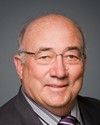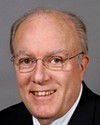Thank you, Mr. Chair.
I want to follow a bit on that, but before that I need to understand where we're going here, Mr. Chairman. This question may be directed to you more than to our witnesses.
Before we continue, there's a French expression, and I'm going to translate it literally “tripping on the flowers of the carpet”--s'enfarger dans les fleurs du tapis. I need to understand the framework, what it is we're doing here, because, indeed, the discussion we've just heard is very relevant.
We've had this exercise. The previous government had a policy. There was extensive consultation. The museums associations have even arrived at a number, un chiffre, that they would be very happy to see the museum assistance program grow to, yet I've heard that the government has said we're not going to have such a policy for at least a couple of years.
I need to know if this exercise is part of a framework in which we are going to drive policy, as a committee. I'm quite prepared to do that, but I need to know if indeed the government is prepared to cooperate. Maybe it's you or maybe it's Mr. Abbott who has to answer that. In fairness to us and to our witnesses and to the people who may be following these meetings, I think it's important that we have a sense of where we're going with this, because looking at the numbers, as we have been, may be a valid exercise in and of itself, but doing so may not be relevant to establishing a policy.
And we need to look at that policy. If we're going to be doing this exercise, my sense is that we need to look at criteria such as what the museum assistance program would involve, and whether it would involve national or regional collections. We need to know if we're talking about unique events or many, and how often we're prepared to duplicate them in the country if we're going to be supporting them. We need to talk about ownership and how it has an impact on support or non-support. Accreditation and all of the rest are the principles that have to be contained in a policy. Otherwise, we're just spinning our wheels here. I'm not fond of doing that or of using the twelve-step approach to doing nothing.
So that's a consideration I'm asking for, in order that we have a sense, if any, of where we're going with this.
I would also like to ask Ms. Reid a question.
or any of the gentlemen there.
Earlier, you said that you agree with the overall results of the consultations held with the museums associations of Canada.
Do you also agree with the figures which appear in the conclusion? If I am not mistaken, the associations said that they would be quite delighted to see the Museums Assistance Program receive funding in the order of $75 million annually.





